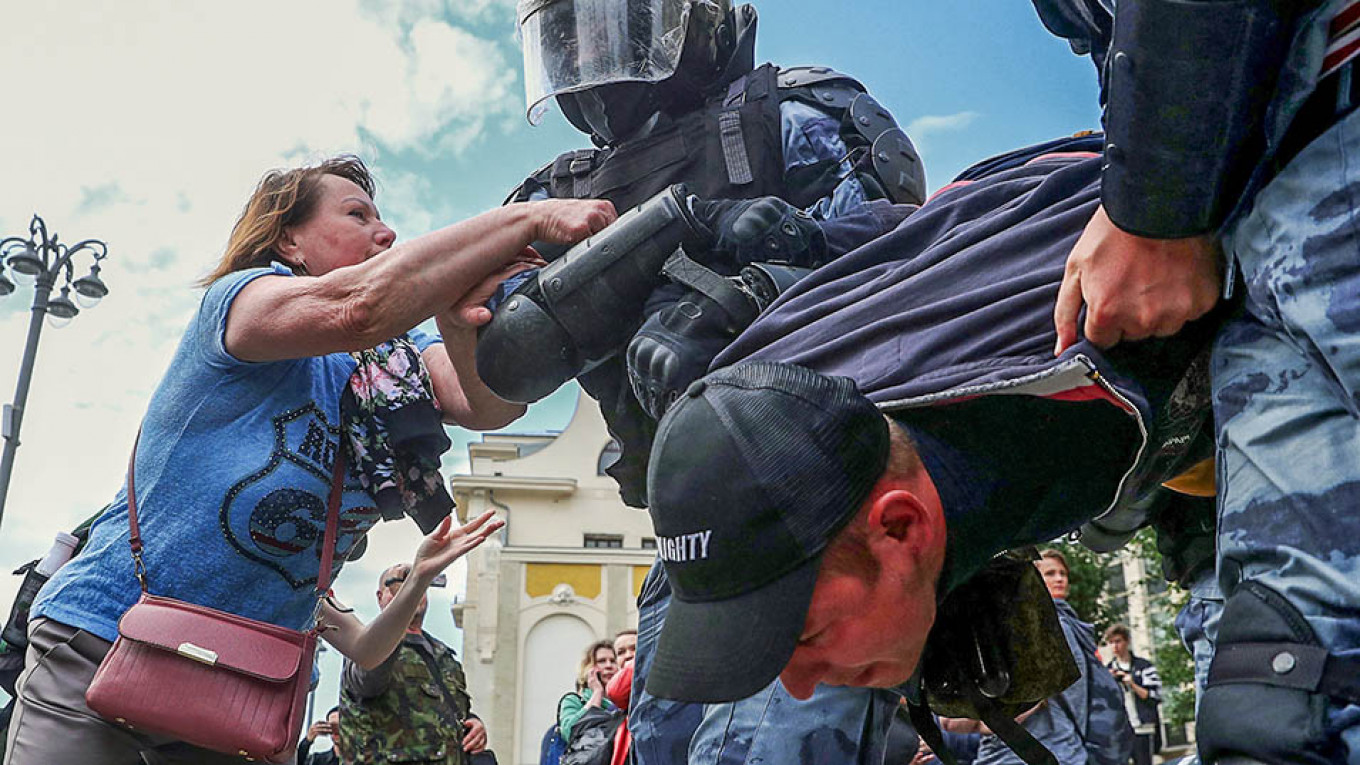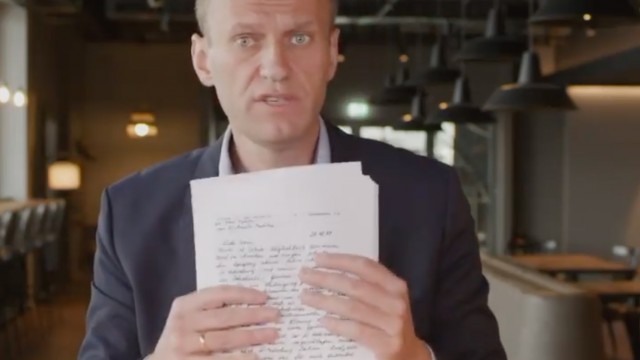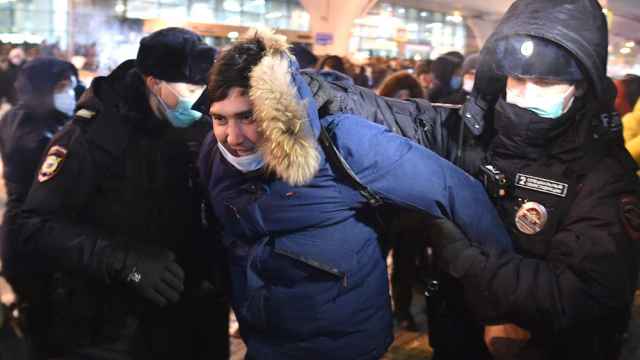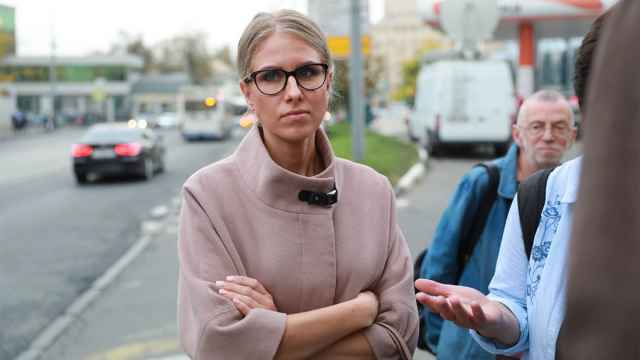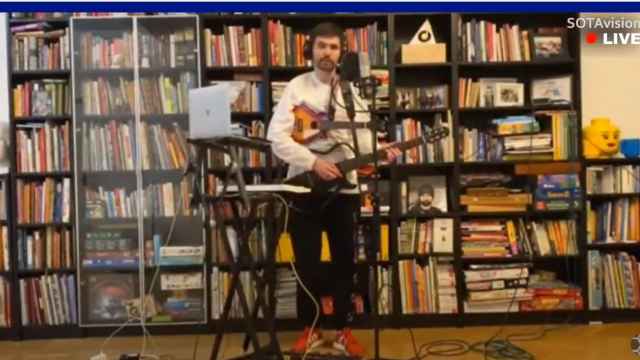Two successive Saturdays of peaceful protest in Moscow, two successive days of the old ultra-violence in response. Indiscriminate arrests, beatings, maybe even a poisoning: this is a step up from what we have become used to seeing in the Russian capital. What can one learn from the authorities’ response?
Overall, the decision was clearly made that these protests had not simply to be controlled, but crushed — this was to be an object demonstration of the state’s will and capacity. Of course, this is not about the Moscow city council elections as such, but rather, the hopes of the opposition and the fears of the elite.
Kremlin calculations
First of all, after giving way to protests over the construction of a new church in Yekaterinburg and over the framing of journalist Ivan Golunov, there was a concern not to allow momentum to seem to swing towards protest. In other words, the Kremlin (and it is clear that it has been the Presidential Administration, not the Moscow Mayor’s Office that has been calling the shots) did not want people to think it had gone soft.
Secondly, the Kremlin draws a clear distinction between issue-based protest and those directed against the system as a whole. The unspoken social contract is that the former may be allowed to succeed, both as a safety valve to bleed off public resentment and also as a way of controlling especially inefficient or corrupt local administrations. However, the deal is that if protesters want their concerns to have a chance of being addressed, then they must pretend that these are not usually symptoms of the wider pathologies of the system — endemic corruption, elite impunity, distorted funding priorities, ineffective representative mechanisms and the rest.
The candidates seeking to stand in the Moscow elections were clearly not going to confine themselves to agitating about new bus stops and kindergarten repairs, but to use their positions to campaign on systemic issues. This, the Kremlin decided, could not be allowed, and so there is no middle ground to be found with the protests.
Finally, this crackdown is a symptom of a wider malaise within the elite, a growing, formless worry about the future. Will Putin go or stay in 2024? Who will succeed him? When will the economy pick up? How long will people put up with lean times? This has already led to a distinct uptick in intra-elite feuds, as political capital is burned on immediate score-settling and revenue-capture operations rather than being stored up for the future. After all, why save what may prove a perishable commodity? This inevitably spins a vicious circle: If your rivals are going to war, then you cannot stay behind too.
In such a climate, fear begins to drive policy. There are those who genuinely believe the ludicrous official line that the protesters plotted a coup, that they were financed from Soros or the State Department, that their numbers were swollen with foreign operatives. Much more widespread is the concern that any such protests could quickly grow out of control. The way Poland’s Solidarity trade union’s metastasized from local economic protest in the Gdansk shipyards to a national movement is a nightmare for the old guard who lived through the 1980s, and also for the new securocrats who have studied it.
With opinion polls showing only a quarter of Russians having any faith that Putin can solve the problems facing them, with less than a third trusting him even according to state surveys, and with 21 million people now living below the poverty line, a record 14.3 percent of the population, these fears are understandable. For all Putin’s regular promises that better times are coming, insiders know this is unlikely. After all, the Levada Centre found 27 percent of respondents claimed they were willing to march against falling living standards – almost double last year’s figures — and separately, 38 percent of respondents said they did not want to see Putin remain president after his current term ends in 2024, up 11 percent since last year.
It would have made much more sense to allow oppositionists to stand for and quite likely win seats to a pretty meaningless municipal body and then silence, marginalize or co-opt them. However, Mayor Sergei Sobyanin has come under pressure, especially as he is regularly touted as a potential successor to Dmitri Medvedev as prime minister, and needed to demonstrate his toughness. More to the point, people such as Andrei Yarin, head of the Presidential Administration’s Domestic Policy Department (and a man with links to hard-liners in the security forces) seem to have felt this was a battle that needed to be fought and won.
Cosmonaut concerns
The operations both Saturdays involved massive deployments of both police and National Guard assets, although in some ways they were quite limited. The violence was pretty extensive and indiscriminate, but it was personal and not mechanical: this was an old school shield-and-baton operation at the hands of riot-armoured ‘cosmonauts.’ While the authorities do not lack for other assets, including water cannon, tear gas and the like, they chose not to use them. The intention was presumably to try and keep the operation confined to specific areas and not give the impression of a whole city under siege. As has been evident in Hong Kong — and the Kremlin must have been delighted that the more violent protests there stole much of the international media attention — clouds of tear gas do not respect neighbourhood boundaries.
However, the authorities were also rightly confident that this would be a matter of beating and arresting peaceful, unarmed protesters. Despite the lurid talk in state-controlled and -dependent media of 'rioters' with weapons, it is noteworthy that the security forces did not even have armed snatch squads available behind the lines as backup. They knew the only violence would come from men in uniform.
Most of the forces at the front line were from the Rosgvardiya, the National Guard, in their distinctive blue tiger-striped urban camouflage. The stormtroopers were the OMON riot police, backed up also by National Guard Troops (VNG: Voiska Natsionalnoy Gvardii), with dark blue-uniformed police largely responsible for arrests. Many of these were normal police, who receive basic public order training and equipment, but there was also the city police’s 2nd Operational Regiment, which specialises in such duties.
On July 27, the regular police seemed less enthusiastic to get truly heavy-handed with the crowd. Of course, when actually engaged, they didn’t seem to hold back (in fairness, equip someone with a stick and put them in a scary, high-adrenaline situation, and they generally won’t), but they were much less likely to launch actual sallies. That may well have been because that is not their role, and one could expect the commanders of the operation to use the Rosgvardiya for more aggressive duties.
That said, Russia is nowhere near the point where the regime seriously needs to worry about defections and refusals to obey orders, but it was an interesting straw in the wind. On August 3, by contrast, they seemed more gung-ho, perhaps suggesting that such speculation was groundless in the first place — or else that this lack of enthusiasm was also noted by the powers than be, who wanted a demonstration of the cops’ commitment. Although city police chief Lt. Gen. Oleg Baranov, a career cop with no particular security or public order background, reportedly took 'personal control' of the operation, the hand of the Presidential Administration and the Rosgvardiya likely rested very hard on his shoulders. It may well be that his role was to direct a drama scripted by others, after all.
Finally, it is worth noting that while there was a massive deployment of security forces, they all appear to have been from Moscow. The police were all from the Moscow City force, the OMON Moscow City or Region, the other National Guard troops largely from Moscow (including the elite 1st Independent Special Designation Division, the so-called ‘Dzerzhinsky Division’). This was not an operation anywhere near the kind of force drain as the 2011-2012 Bolotnaya Protests, which necessitated bringing in units from other locations to secure the capital. In short, the security forces are nowhere near yet being at overstretch.
Competing conclusions
There were more than 1300 arrests on the first day, more than 800 at the second (and smaller) protest. The diminished scale of the second Saturday of unauthorized protest is probably a result of the heavy rain and a lack of clear focus to the event as much as anything else. The Mayor’s Office seems to want to defuse the situation, offering authorized protests for next weekend. It remains to be seen if the opposition and the Kremlin, for their respective reasons, will be willing to compromise.
After all, both sides have much to lose. If the opposition allow themselves to appear to be satisfied with some treats and trinkets, they lose credibility and momentum. There is — so far — no serious challenge to the state, but as Alexei Navalny and his allies and proxies seek to create a national movement, they need to find some way to mobilize the wider mood of protest. For the moment, his network is thinly-spread and vulnerable, and the authorities can disperse any protests and arrest any activists they choose. A new investigation into his FBK Anti-Corruption Foundation on money-laundering charges could be not only an attempt to track and block his funding but also the start of a more serious government offensive against him.
The opposition cannot really back down.
Meanwhile, the Kremlin’s own goals seem to offer little hope for compromise. The opposition needs to be shown that it cannot expect explicitly to challenge the Kremlin and win. Their potential supporters need to be shown that to join protests brings the risk of indiscriminate arrest and violence. The elite needs to be reassured that the state is strong, with both the will and capacity to defend the status quo.
The Kremlin cannot really back down.
So meanwhile, pensioners and passers-by are fair game for balaclava-clad ‘cosmonauts’ to haul into avtozak police wagons, pundit-propagandists can call peaceful protesters 'rioters' and 'provocateurs', and somewhere, no doubt, some oppositionists will be questioning whether marches and witty placards can change anything, and whether the Kremlin listens to anything but force. Violence paired with a smart effort to co-opt the population is, sadly, an eminently successful technique (look at Tienanmen Square).
But the Kremlin seems unable or unwilling to offer its people more than crass propaganda, World War Two films, and hollow promises of a better future. Violence alone is the mark of a regime that has run out of ideas and the capacity to evolve.
This article was originally published in Raam op Rusland.
A Message from The Moscow Times:
Dear readers,
We are facing unprecedented challenges. Russia's Prosecutor General's Office has designated The Moscow Times as an "undesirable" organization, criminalizing our work and putting our staff at risk of prosecution. This follows our earlier unjust labeling as a "foreign agent."
These actions are direct attempts to silence independent journalism in Russia. The authorities claim our work "discredits the decisions of the Russian leadership." We see things differently: we strive to provide accurate, unbiased reporting on Russia.
We, the journalists of The Moscow Times, refuse to be silenced. But to continue our work, we need your help.
Your support, no matter how small, makes a world of difference. If you can, please support us monthly starting from just $2. It's quick to set up, and every contribution makes a significant impact.
By supporting The Moscow Times, you're defending open, independent journalism in the face of repression. Thank you for standing with us.
Remind me later.



